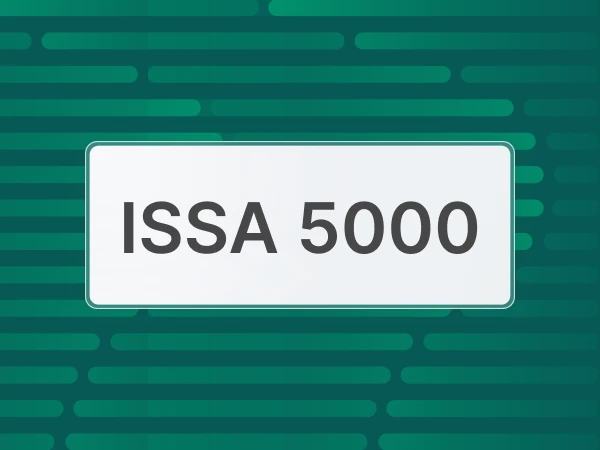What does a company's carbon footprint consist of?
Often, there is a focus on emissions derived from industrial processes, not taking into account all the activities that are carried out outside the company's perimeter, such as the procurement of raw materials, their transportation, the distribution of the final product, the use phase, and disposal.
Emissions produced within the corporate scope, however, represent only a fraction (on average less than 20 percent) of total emissions.
To fully understand the impact of an activity with respect to climate change, it is necessary to include all emissions generated downstream and upstream in the value chain: in other words, Scope 3 must be calculated.
Scope 1, 2, 3: what are the purposes of issuance
According to the GHG Protocol, the international reference standard for calculation, emissions are divided into 3 purposes according to their source.
- Scope 1: These are direct emissions of GHGs (Greenhouse Gases or greenhouse gases) that result from sources owned or controlled by an organization. For example, emissions associated with the use of fossil fuels within a facility, from combustion produced by owned or leased transportation equipment, and those resulting from refrigerant gas leaks.
- Scope 2: These are indirect emissions from the generation of electricity, heat and steam purchased and consumed by the organization. These emissions are considered indirect because the company is responsible for energy use, but not for the emissions generated by the supplier for its production.
- Scope 3: These are indirect GHG emissions, excluding those from electricity, heat and steam. This category encompasses emission sources that are not under direct corporate control, but whose emissions are indirectly related to the company's operations. Scope 3 includes emissions upstream and downstream in the value chain, i.e., those produced by suppliers and customers.
Scope 3: which emission categories are included
Scope 3 emissions are classified into 15 categories: it is important to note that not all companies are required to report on all 15, as some may not be relevant to the specific nature of the company's activities or operating environment.
Therefore, the first activity performed in a Scope 3 emissions study is asignificance analysis, aimed at identifying sources of emissions that are relevant to the specific business.

The 15 categories of Scope 3 are detailed below.
- Purchased goods and services: this category quantifies both the emissions from the production of goods purchased by the company and the impact of services purchased from external suppliers. Thus, it includes emissions related to purchased raw materials, intermediate goods and finished goods.
- Capital assets: emissions generated by the production of capital assets (such as property or machinery) acquired in the reporting year are calculated.
- Fuel and energy extraction: includes emissions from fuel and energy purchased by the company and not included in Scope 1 or 2, such as extraction, production and transportation of purchased fuel and energy.
- Upstream transportation and distribution: includes emissions associated with the transportation of goods and services purchased by the company, carried out using non-owned vehicles.
- Production waste and waste: emissions generated by the disposal, treatment and transportation of waste by third parties are quantified.
- Business travel: emissions associated with business trips made by staff are calculated, i.e., the impact generated by the means of transportation used (excluding those made by company vehicles) to travel to a customer, supplier, or event.
- Staff commuting: emissions from staff commuting from homes to the workplace are accounted for.
- Leased asset purchases: includes emissions related to assets purchased under lease, the consumption of which has not already been reported in Scope 1.
- Transportationand downstream distribution: this includes emissions related to the transportation of goods sold by the company carried out with third-party vehicles (not owned by the company), such as shipping a product sold online via courier.
- Processing of sold goods: includes emissions from the processing of sold goods carried out by third parties.
- Useand use of the service/product: accounts for emissions arising from the use of the product sold. For example, for a company that sells smartphones, emissions related to the consumption of electricity required to use the device are imputed.
- End-of-lifeof products sold: these emissions come from the disposal and end-of-life treatment of products sold by the company.
- Leased assets: includes emissions related to leased assets where consumption has not been previously reported in Scope 1.
- Franchise: emissions from franchising one's brand, i.e., granting third-party companies the license to sell or distribute one's goods or services, are quantified.
- Investments: considers the issues generated by the companies in your investment portfolio. Issues generated by the businesses in which you have invested are reproportioned according to the share of capital invested and the length of time in the portfolio.
The categories listed refer to the international standard of the GHG Protocol, however, this subdivision is not universal.
Scope 3 categories according to ISO 14064 guidelines.
In the ISO 14064 guidelines, the division is slightly different: in this standard, emissions are divided into 6 categories.
Category 1. Direct GHG emissions and removals:
- Scope 1.
Category 2. Indirect GHG emissions from imported energy:
- Scope 2.
Category 3. Indirect GHG emissions from transport:
- Upstream transport and distribution;
- business trips;
- commuting;
- downstream transport and distribution.
Category 4. Indirect GHG emissions from products used by the organization:
- Purchased goods and services;
- capital goods;
- extraction of fuel and energy;
- production waste and refuse;
- Leased assets purchased.
Category 5. Indirect GHG emissions associated with the use of products from the organization:
- processing of the products sold;
- Use and enjoyment of the service/product;
- End-of-life of the products sold;
- Leasing of assets;
- franchise;
- investments.
Category 6. Indirect GHG emissions from other sources:
- specific emissions that cannot be placed in any other category. It is the responsibility of the organization to define the content of this particular category.

How much does Scope 3 impact?
It is quite common for two companies operating in the same sector to have a similar emission breakdown, however, the distribution of emissions varies greatly from sector to sector.
Let us analyze, for example, two cases that allow us to highlight the different relevance between Scope 3 emission categories.
Scope 3 emissions of a financial institution
A financial institution's emissions are often related to financial management activities, consequently more than 90 percent of emissions come from investments themselves.
The weight of this category varies depending on the amount of investments made and the sectors in which the financial institution operates.
Scope 3 emissions of a company in the energy sector
For companies operating in the energy sector, on the other hand, most emissions come from the combustion of fossil fuels sold, such as fuels used by combustion engine vehicles and gas used to heat a home.
These two examples demonstrate how much the emission breakdown can vary depending on a company's core business. Below is a graph summarizing the distribution of emissions by sector.

How to calculate emissions Scope 3
After having identified the relevant emission categories for a given company, one can move on to the practical part, which is the quantification of emissions. Emissions related to each emission source are calculated using the following formula:
GHG emissions = Primary data * Emission factor
Primary data are measurements available from the company: they may refer, for example, to the mass in kilograms of a product purchased, or to the kilometer distance traveled to transport a good sold to the end customer.
Emission factors are coefficients that allowCO2 eq. emissions to be determined from the primary data.
Depending on the information available, the emissions of the different Scope 3 categories can be quantified by applying one of the following methods.
- Spend base: this methodology considers as primary data the monetary inputs obtainable through the accounting records taken during the fiscal year.
This approach appears to be the simplest approach for performing a Scope 3 category calculation, however, the emission factors used are generic and consequently greatly reduce the accuracy of the calculation.
- Average data: reports emissions using emission factors from literature studies. The primary data, in this case, may refer to the quantity of material purchased (a weight in kilograms or the unit value of goods purchased).
This approach offers greater accuracy than the spend base method, but the acquisition of primary data may be less accessible and requires timely collection.
- Supplier specific data: the calculation is done using as an emission factor a study provided directly by the supplier, related to the specific product purchased, for example a product carbon footprint or a LCA (Life Cycle Assessment or product life cycle).
This approach provides the highest degree of accuracy, but only a small percentage of products available on the market can provide this type of information.
- Hybrid method: the calculation is carried out using a hybrid mode, going for a combination of "average data" and "supplier specific data."
The accuracy of this methodology varies depending on the predominantly used approach: if the calculation is carried out using predominantly the "supplier specific data" mode it will present a high accuracy; conversely, the accuracy decreases if the "average data" mode is predominantly used.
Sources






























